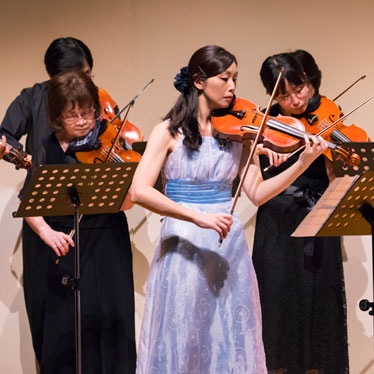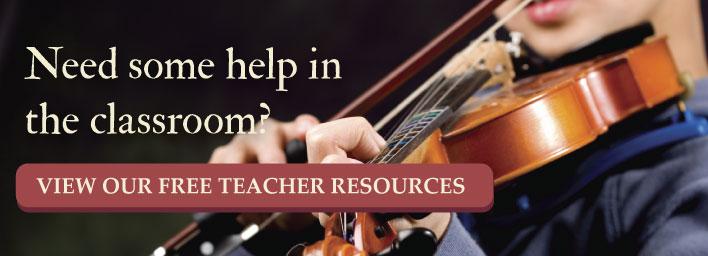How to Lead Mixed-Age String Groups

The picture of the typical student is someone young, anywhere from a toddler to college student. However, older adults are also often students. Whether it’s veterans, women's reentry or retirees who decided to learn to play the violin – adults of all ages become students on their own unique schedule.
Learning is a lifelong endeavor, which is great for adult students. Yet mixed-age student groups provide challenges for the instructor. Here are a few tips to help teachers understand the different needs of older and typical-age students, and how to breach those gaps in class or rehearsal.
Recognize each age group's particular set of insecurities
For adult learners, one of their main insecurities is entering a space they know isn't designed for them. The older student is likely in the minority among younger students and doesn't fit into the class's social structure. Second, adults are often accomplished in other areas and can feel self-conscious to be back in that awkward, messing up, phase.
For the average college-aged student, having an older adult in class can be intimidating, like having another parent around. This is especially true if they see the adult student interacting with the teacher as a peer. Younger students can also feel insecure seeing how the adult student's life experience and knowledge outstrip their own.
What a teacher can do:
- As an aside, offer adult students some resources on handling the inevitable awkwardness of learning something new. If the school has an appreciable number of older adult students, it will have resources. You can also use one-on-one conversation just to acknowledge their challenge and commend them for taking it on.
- If you have an exercise or assignment where the students break into small groups, don't leave it to them to sort themselves into groups. It's too easy for the adult student to get overlooked. Another option is to run some socializing exercises in the beginning sessions of the class, to give the opportunity for the adult students to build some social connections.
- Try to minimize any actions that place the adult student as your peers – at least in the context of the classroom. For example, if students use a title when addressing you, the adult students should as well.
Use the age disparities to improve everyone's learning experience
While each age group has its insecurities, they also have their own strengths. For example, adult learners are typically more focused and serious about their studies. They're self-motivated and don't need teachers to remind them to do their homework. The younger students' natural gregariousness may interfere with their focus, but has its own advantages.
The age disparity also brings with it a cultural contextual disparity. Younger students may naturally gravitate towards using apps and technology to help them learn.
What a teacher can do: Openly lean into the strengths of the different age groups.
- Let the younger students take the lead on providing energy and enthusiasm, while the adult students can literally be the adults in room and help maintain focus on the task at hand.
- Create cross-learning opportunities where students can share their own expertise with other students. This could mean having some of the younger students provide the class with their reviews and recommendations of different music learning apps so their older peers don't have to sort through them. Some older students may be able to add some background to a composer, musician, or work. Do they have any inspiring stories to tell of when they saw Yo-Yo Ma live? Can they give first-hand descriptions of any of the great concert halls in Europe?
- When selecting popular music that everyone can get excited about, entertainment scores will often cross generations, from Game of Thrones to Star Wars. Expand younger students' horizons and thrill older students by choosing some great rock classics that translate well to strings.
If you can give each group the opportunity to share what makes them an asset to everyone in class, it will help each group spend less time worrying about their relative insecurities. Hopefully, the end result will be that all your students find more than they were expecting when enrolling in your class.
If you're a private teacher or organization and looking for a new type of class to offer – go to the cross-generational extreme: seniors and toddlers learning music together!
Sponsored by Thomastik-Infeld


